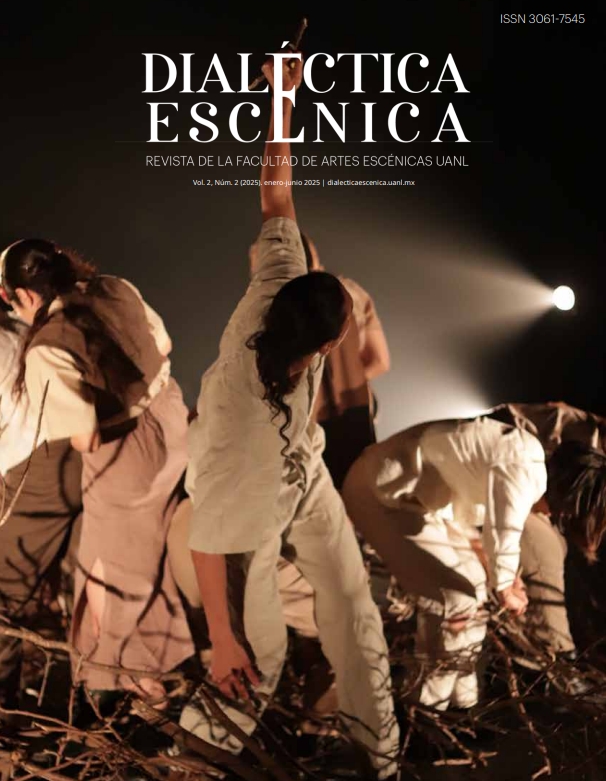Time and Abscense
Counter-device, Body and Violence in Quién baila mambo by Jesús González Dávila
DOI:
https://doi.org/10.29105/de.v2i2.13Keywords:
Body, Violences, Hipertextuality, Multifocality, Counter-deviceAbstract
This research examines the use of hypertextual resources employed by Jesús González Dávila in his dramatic text Quién baila mambo for the creation of a counter-device, which enables him to address the presence of disappeared bodies and the violence inflicted upon them. It analyzes how the author devises dramaturgical mechanisms that subvert power dynamics. Through a theoretical and symbolic analysis, the study investigates the multifocality of the play, highlighting how hypertextual connections and the reconfiguration of its narratives allow the author to articulate a critical discourse against traditional mechanisms of control and violence. The methodology includes a detailed textual analysis of one of the scenes of this work and a theoretical review on the generation of said counter-device from the mechanisms of hypertextuality. The aim is to demonstrate how González Dávila challenges and reinterprets power relations surrounding the body and violence, proposing new interpretations of control and resistance within the Mexican social context.
References
Agamben, G. (2015). ¿Qué es un dispositivo? Editorial Anagrama.
Álvarez Díaz, J. A. (2003). Las muertas de Juárez: Bioética, género, poder e injusticia. Acta Bioethica, IX(2), 219-228. https://www.redalyc.org/articulo.oa?id=55490208 DOI: https://doi.org/10.4067/S1726-569X2003000200008
Bachelard, G. (2001). La poética del espacio. Fondo de Cultura Económica.
Diéguez, I. (2014). Escenarios liminales. Teatralidades, performatividades, políticas. Paso de Gato.
Escobar Delgado, A. (2010). Hacia una poética teatral de Jesús González Dávila. CONACULTA, CITRU.
Galicia, R. (2018). Dramaturgias fronterizas: Ensayos. Ed. Secretaría de Cultura, INBA, CITRU.
González Dávila, J. (2008). Diálogo incorrupto: Obras completas, (Tomos I y IV). Mijares, E. (Comp.) Ed. Instituto Coahuilense de Cultura.
Hispanics in Philanthropy. (2017). Una mirada a las organizaciones de la sociedad civil a la trata de personas en México. https://comisioncontralatrata.segob.gob.mx/work/models/Comision_Intersecretarial/Documentos/pdf/Biblioteca/UNA-MIRADA-DESDE-LAS-ORGANIZACIONES-DE-LA-SOCIEDAD-CIVIL.pdf
Partida Tayzán, A. (2002). Se buscan dramaturgos I: Entrevistas. CONACULTA-FONCA, INBA, CITRU.
Radice, G. y Di Sarli, N. (2011). Dispositivo teatral: vinculaciones de saber y poder en el binomio representación- expectación [Ponencia]. VIII Jornadas de Investigación en Arte, Facultad de Bellas Artes, La Plata, Argentina. https://sedici.unlp.edu.ar/handle/10915/38596
Lacoue-Labarthe, P. (2002). La ficción de lo político. Heidegger, el arte y la política. Editorial Arena libros.
Paez i Blanch, R. (2009). Cartografías operativas y mapas de comportamiento. En Duarte, I. y Bernart, R. (Eds.), Querido público. El espectador ante la participación: jugadores, usuarios, prosumers y fans. Centro Párraga / CENDEAC (pp. 173-200).
Downloads
Published
How to Cite
Issue
Section
License
Copyright (c) 2025 Isaac Pérez Calzada

This work is licensed under a Creative Commons Attribution 4.0 International License.





